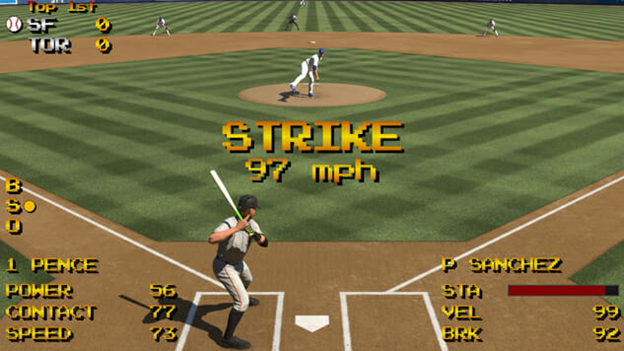The Evolution of MLB Video Games: From 8-Bit Classics to Hyper-Realistic Simulations

Baseball video games have evolved significantly over the past four decades, transforming from simple pixelated experiences into hyper-realistic simulations that capture every nuance of the sport. Early titles offered basic mechanics with limited interactivity, while today's games feature detailed player models, real-world physics, and advanced artificial intelligence. The integration of real-time data and analytics has not only enhanced gameplay but also allowed fans to interact with Major League Baseball in unprecedented ways.
This journey from rudimentary 8-bit graphics to stunning 4K visuals has been fueled by technological advancements, the rise of online multiplayer modes, and the growing demand for realism in sports gaming. MLB video games now serve as both a form of entertainment and a strategic tool for enthusiasts who analyze team performance, test lineups, and refine their predictions for real-world games. The evolution of these games reflects the broader development of sports simulations, where realism and interactivity are paramount.
The History of MLB Video Games: A Journey from 8-Bit to 4K Graphics
The earliest baseball video games date back to the late 1970s and early 1980s, featuring pixelated graphics and simple gameplay mechanics. "Home Run" (1978) on the Atari 2600 and "Baseball" (1983) on the NES were among the first attempts to bring the sport into digital form. These games had limited controls, basic player movements, and no official team licensing, but they laid the foundation for what was to come.
With the rise of the Sega Genesis and Super Nintendo in the early 1990s, baseball games saw a significant graphical and gameplay upgrade. Titles like "RBI Baseball" (1986) and "Ken Griffey Jr. Presents Major League Baseball" (1994) introduced more detailed sprites, enhanced animations, and rudimentary player statistics. While these games were still far from realistic, they allowed fans to control recognizable players and teams, bringing the MLB experience closer to home.
Classic to Cutting-Edge: The Technological Advancements in MLB Video Games
The late 1990s and early 2000s saw the first real leap in baseball video games with the introduction of 3D graphics. "Triple Play 97" (1996) and "All-Star Baseball 99" (1998) utilized polygonal graphics, making player models more lifelike than ever. The PlayStation and Nintendo 64 ushered in new gameplay mechanics, including realistic ball physics, dynamic weather effects, and more accurate stadium representations.
The mid-2000s introduced online gaming to the baseball video game world, allowing players to challenge each other across the globe. "MVP Baseball 2005" revolutionized gameplay with its deep franchise mode and refined mechanics. Meanwhile, "MLB 2K5" (2005) became the go-to title for Xbox players, featuring enhanced pitching and batting controls.
How MLB Video Games Have Transformed Baseball Gaming Over the Years
One of the biggest improvements in modern MLB video games is the implementation of advanced AI and player ratings. Games like "MLB The Show" analyze real-life player statistics to create highly accurate representations of athletes. This advancement has allowed gamers to use simulations to predict outcomes, test different lineups, and refine their MLB picks for real-world games.
The introduction of deep franchise modes gave players the ability to act as general managers, handling trades, scouting prospects, and managing team finances. "MLB The Show 20" introduced March to October mode, which streamlined the franchise experience while still allowing full control over a team's success.
The Future of MLB Video Games: Where Are We Headed?
Today's MLB video games are pushing the boundaries of realism with 4K graphics, hyper-realistic animations, and motion capture technology. Games like "MLB The Show 23" feature player movements that closely mimic real-life counterparts, making each swing, pitch, and fielding play look as authentic as possible.
AI-driven enhancements continue to shape the realism of baseball video games. Predictive analytics allow for more accurate player performance modeling, while machine learning algorithms adjust difficulty levels dynamically to match a player's skill level, ensuring a more immersive experience.
The Role of MLB Video Games in Fan Engagement
Many gamers now use MLB video games as a tool for fantasy baseball analysis. The ability to simulate games based on real-life stats provides unique insights into potential matchups, player performance, and season projections.
The rise of competitive gaming has extended into MLB video games, with online tournaments and esports leagues bringing together the best players worldwide. "MLB The Show" regularly hosts online championships, displaying the growing popularity of baseball video games as a competitive platform.
From its humble beginnings in the 8-bit era to today's hyper-realistic simulations, MLB video games have come a long way. With advancements in AI, 4K graphics, and online multiplayer capabilities, these games continue to enhance the way fans experience baseball. Whether managing a franchise, analyzing stats for fantasy leagues, or engaging in online competitions, MLB video games are more than just entertainment--they are a key part of the sport's digital evolution.





Update